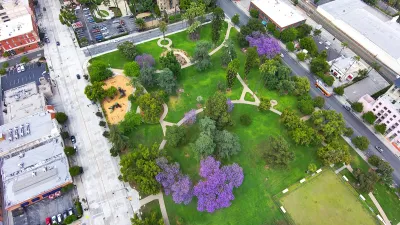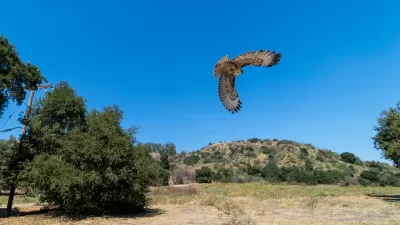Creating parks and open space in L.A. County requires overcoming land scarcity, high costs, and other challenges through strategic partnerships, innovative multi-benefit designs, and policy reforms to ensure equitable access and sustainability.

Greater Los Angeles faces significant challenges in providing adequate park space, ranking 88th among the top 100 U.S. cities in park access, acreage, and investment, according to the Trust for Public Land’s ParkScore Index. While initiatives such as the Countywide Parks Needs Assessments, Measure A, and targeted green infrastructure investments have helped expand access, only about half of L.A. County residents live within a 10-minute walk of a park. Land scarcity, high real estate costs, and environmental contamination—such as brownfields—are major barriers to new park development, particularly in underserved communities with the greatest need for green space. Addressing these challenges requires creative solutions, strategic policy reforms, and strong partnerships to ensure equitable park access for all.
Parks are essential for climate resilience, public health, and social equity, serving as more than just recreational spaces. Multi-benefit parks, like the recently revitalized Earvin “Magic” Johnson Recreation Area, integrate sustainable features such as stormwater treatment wetlands, native landscaping, and expanded green space to mitigate urban heat and support biodiversity. The future of park design prioritizes repurposing underutilized spaces, integrating smart technology for sustainability, and ensuring community-driven planning approaches that promote accessibility and resilience. The Los Angeles County Department of Parks and Recreation (DPR) plays a critical role in implementing these projects, as seen in recently developed parks such as Nogales Park, San Gabriel River Park, and Wishing Tree Park. The upcoming Puente Hills Regional Park, transforming a former landfill into the county’s first new regional park in over 30 years, exemplifies innovative approaches to expanding green space in a densely developed region.
Expanding parks and open space requires a comprehensive strategy, including securing land acquisitions, strengthening public-private partnerships, and implementing policy reforms that provide adequate funding for operations and maintenance and streamline land conversion and remediation processes. Maximizing available land through initiatives like schoolyard transformations and integrating green infrastructure into urban planning can further enhance park accessibility. The Chief Sustainability Office supports these efforts through the OurCounty Sustainability Plan, which prioritizes equitable park access, tree canopy expansion, and green infrastructure development.
FULL STORY: A Walk in the Park

Trump Administration Could Effectively End Housing Voucher Program
Federal officials are eyeing major cuts to the Section 8 program that helps millions of low-income households pay rent.

Planetizen Federal Action Tracker
A weekly monitor of how Trump’s orders and actions are impacting planners and planning in America.

Ken Jennings Launches Transit Web Series
The Jeopardy champ wants you to ride public transit.

Driving Equity and Clean Air: California Invests in Greener School Transportation
California has awarded $500 million to fund 1,000 zero-emission school buses and chargers for educational agencies as part of its effort to reduce pollution, improve student health, and accelerate the transition to clean transportation.

Congress Moves to End Reconnecting Communities and Related Grants
The House Transportation and Infrastructure Committee moved to rescind funding for the Neighborhood Equity and Access program, which funds highway removals, freeway caps, transit projects, pedestrian infrastructure, and more.

From Throughway to Public Space: Taking Back the American Street
How the Covid-19 pandemic taught us new ways to reclaim city streets from cars.
Urban Design for Planners 1: Software Tools
This six-course series explores essential urban design concepts using open source software and equips planners with the tools they need to participate fully in the urban design process.
Planning for Universal Design
Learn the tools for implementing Universal Design in planning regulations.
Heyer Gruel & Associates PA
Ada County Highway District
Institute for Housing and Urban Development Studies (IHS)
City of Grandview
Harvard GSD Executive Education
Toledo-Lucas County Plan Commissions
Salt Lake City
NYU Wagner Graduate School of Public Service





























